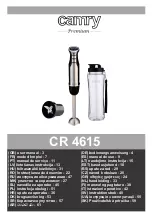
3. CLI Commands
CLI-A2-GB20-00
October 2004
3-9
A Backbone-VLAN tag cannot be used independently; standard VLAN tags must
be set. Additionally, the DSLAM uplink connection for the port being configured
must run through a router in order for a Backbone-VLAN tag to function.
Backbone-VLAN = 0-4085
Default: 0 (disabled)
Flood
Flood refers to the method in which interface modules handle unknown unicasts
(traffic directed to a single MAC Address), multicasts (traffic directed to multiple
MAC Addresses) and broadcasts (traffic directed to all MAC Addresses) for each
port. The Institute of Electrical and Electronics Engineers (IEEE) Virtual Local
Area Network (VLAN) standard 802.1Q dictates that packets should be forwarded
(flooded) if within the VLAN range for that port.
Upl (Uplink - Default)
Unknown unicast, multicast and broadcast traffic is flooded only to the DSLAM’s
uplink interface ports. This prevents communication between interface ports
without the intervention of an upstream device such as a router. If communication
between interface ports IS desired, the upstream device must be properly
configured to allow it.
Vln (VLAN)
Unknown unicast, multicast and broadcast traffic (within the sender’s VLAN range)
is flooded to both the uplink ports and the interface ports.
[system name] ->SET SLOT [ALL or 1-12 for the IPD12000, ALL or 1-4
for the IPD4000, 1 for the Micro DSLAM] PORT [ALL or port number]
BACKBONE_VLAN [0-4085]
Example: [system name] ->set slot 2 port all backbone_vlan 100
[system name] ->SET SLOT [ALL or 1-12 for the IPD12000, ALL or 1-4
for the IPD4000, 1 for the Micro DSLAM] PORT [ALL or port number]
FLOOD UPL
Example: [system name] ->set slot 2 port all flood upl
[system name] ->SET SLOT [ALL or 1-12 for the IPD12000, ALL or 1-4
for the IPD4000, 1 for the Micro DSLAM] PORT [ALL or port number]
FLOOD VLN
Example: [system name] ->set slot 2 port all flood vln
















































